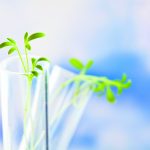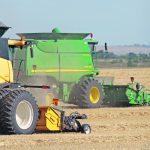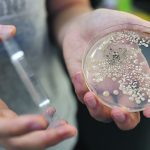The author writes that it was refreshing to see agriculture biotechnology receive a positive reception at a recent conferenceorganized by the Food and Agriculture Organization, including during a speech by FAO director general Qu Dongyu.
Stories by Stuart Smyth

Activists lie about Green Revolution’s success
In the past few years, many environmental and academic activists have been undermining the work of Norman Borlaug and the successes of the Green Revolution by publishing false information.

Cartagena Protocol on Biosafety is obsolescent
The author says that in the past 20 years, no agreement has stifled innovation, reduced sustainability and had a negative impact on reducing food insecurity more than the Cartagena Protocol on Biosafety.

Ag faced challenges, progress in 2024
The agriculture industry constantly faces challenges and adversities that try the patience and fortitude of those in the sector. Rather than focus on a discussion of these issues now that the new year has arrived, this article highlights important aspects from the past year. Gene editing gains regulatory approval in Canada Perhaps the leading issue […] Read more

Innovation adoption lags in farming
Every innovative product of technology that is commercialized eventually reaches what is known as “full adoption.” This is the point at which the peak percentage of society has adopted an innovation. Some innovations reach the point of full adoption more rapidly than others or have higher full adoption rates. The adoption rate of seatbelts in […] Read more

What are the real grocery store profits?
Two years ago, food price inflation was rampant, with monthly year-over-year increases in excess of 10 per cent. Statistics Canada’s Consumer Price Index for March indicated the price for a basket of food dropped by $8.42 from the same basket in February. The total basket cost in February was $630.88 and $622.46 in March. This […] Read more

Farm economic aspect often ignored
The term “environmental sustainability” frequently lacks definition, though it is widely used by governments, media, retailers and environmental non-governmental organizations. We use the term in our research, where we demonstrate with evidence how environmental sustainability has changed, for better or worse. However, the term has been over-used and often lacks meaning or value. The term […] Read more

Genomic crop research goes wild
While the vast majority of crops produced in Canada have been introduced from elsewhere, there is a lack of wild type relatives existing in nature for these crops. This is not the case in many other parts of the world where plants used for domesticated food production have wild types that bear genetic similarity. In […] Read more

Ag biotech helps with climate change
The integration of modern seed genetics, inputs and technologies highlights how food production is a highly technical system, requiring all three to be efficient and cost-effective.

DSI tax threatens public ag research
Digital sequence information, which was discussed at last year’s COP 15 convention on biological diversity, has significant implications for agriculture. DSI is the available information that exists online about a plant specie’s genetics once it has been sequenced. Discussions have been ongoing about access to DSI and the benefits that may occur, such as a […] Read more




